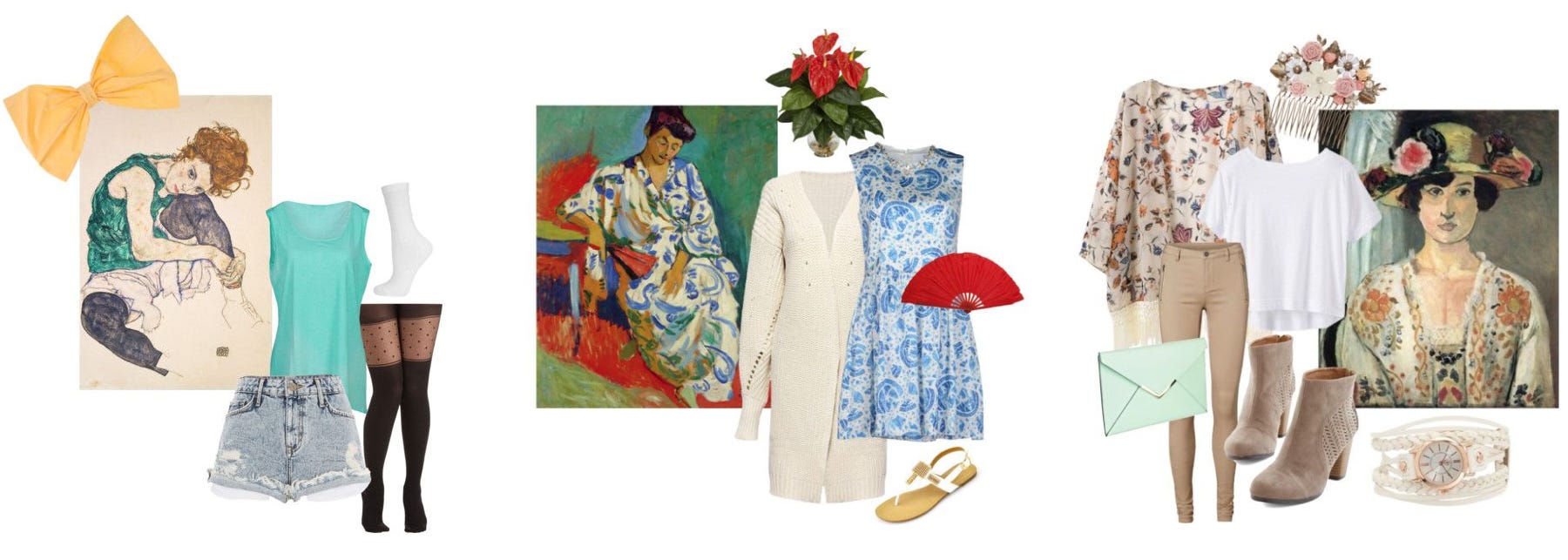Blog
Fashioning Our Own Entry Points into Closed Creative Circles – 555
In crafting my own visual story around fashion, I could join the conversation in a way that worked for me.
This essay initially appeared in the 2018 edition of Fashion Studies Journal under the title “In Memoriam: The Internet Tool That Shaped Me,” where it primarily discussed the abrupt closure of the Polyvore tool following its acquisition. While the original focus centered on my personal project utilizing Polyvore and the insights gained from it, editorial adjustments were made to align with the publication’s emphasis on the fashion economy. In this revised version, I aim to delve deeper into the project’s intricacies, adhering to my initial intention of sharing its profound impact.
As winter approached in New York City, I found myself grappling with the monotony of an entry-level copywriting position that offered little in the way of creative fulfillment. Working at a digital advertising startup in the bustling heart of Midtown West, I navigated through a landscape of constant administrative changes and ambiguous tasks, leaving me uncertain about my professional trajectory.
Like many young professionals in their early twenties, I felt ensnared in a state of limbo. My meager salary barely covered rent and student loan payments, relegating my lunch choices to a humble peanut butter and jelly sandwich. With quitting not an option and job opportunities scarce, I sought solace during a mundane morning at work by perusing a writer friend’s latest articles, where I stumbled upon Polyvore.
Intrigued by its utility in effortlessly crafting graphics showcasing linked clothing items, I seized upon the opportunity to incorporate it into my own assignments, craving any semblance of creative stimulation to endure the workday grind. Drawing from my background as a visual artist, I utilized the platform to craft a cover image for a brief feature on celebrity fashion trends. By the time I departed the office that evening, I found myself captivated by Polyvore’s potential.

My journey as an artist took flight during my freshman year of high school art class, where I was introduced to the captivating world of painting through the works of impressionist masters like Degas, Monet, and Renoir. The allure of post-impressionism, with luminaries such as Matisse, van Gogh, and Toulouse-Lautrec, felt like a revitalizing surge, infusing my artistic spirit with renewed vigor and inspiration.
Despite harboring a deep-seated passion for fashion and style, I had long grappled with expressing myself through clothing. Factors like body image concerns, budget constraints, and the absence of occasions to flaunt eclectic tastes compounded my hesitation. Having spent twelve years in a Catholic school uniform, the absence of sartorial decisions in my daily routine became ingrained, relying solely on my personality to forge connections with others.
However, the advent of Polyvore bestowed upon me a newfound sense of freedom. This innovative platform transcended barriers of income, fashion pedigree, and design prowess, offering users the opportunity to curate visual collages reflective of their unique style preferences. With a simple interface facilitating seamless creation and immediate sharing across social platforms, Polyvore empowered fashion enthusiasts of all backgrounds to express themselves without inhibition.

 Skip to content
Skip to content

